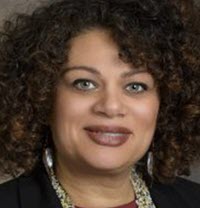Abstract
Excerpted from: Ann M. Aviles and David O. Stovall, When “Class” Explanations Don't Cut It: Specters of Race, Housing Instability, and Education Policy, 19 University of Maryland Law Journal of Race, Religion, Gender and Class 166 (Spring, 2019) (95 Footnotes) (Full Document)

 Housing instability greatly impacts the educational engagement and life outcomes for K-20 students. Recent research chronicles that approximately 3.5 million young people experienced homelessness over a twelve-month period in the U.S. Of these young people, Black youth had an 83% higher risk of homelessness, reflective of racial disparities that exist in the form of “school suspensions, incarceration and foster care placement.” Additional research determines that the number of college students experiencing housing insecurity ranges from 11-19%, while other studies have identified rates of housing instability amongst university students to be 36%, and community college students 46%. As the number of college students experiencing housing insecurity continues to grow, new legislation was proposed to address this growing concern in September 2017. The Higher Education Access and Success for Homeless and Foster Youth Act (HEASHFY) and The Fostering Success in Higher Education Act (FSHEA) were proposed to address students' material and educational needs.
Housing instability greatly impacts the educational engagement and life outcomes for K-20 students. Recent research chronicles that approximately 3.5 million young people experienced homelessness over a twelve-month period in the U.S. Of these young people, Black youth had an 83% higher risk of homelessness, reflective of racial disparities that exist in the form of “school suspensions, incarceration and foster care placement.” Additional research determines that the number of college students experiencing housing insecurity ranges from 11-19%, while other studies have identified rates of housing instability amongst university students to be 36%, and community college students 46%. As the number of college students experiencing housing insecurity continues to grow, new legislation was proposed to address this growing concern in September 2017. The Higher Education Access and Success for Homeless and Foster Youth Act (HEASHFY) and The Fostering Success in Higher Education Act (FSHEA) were proposed to address students' material and educational needs.
Awareness and recognition of students' experiences with housing instability via the proposal of legislation is an appropriate and necessary response. However, similar to K-12 homeless education policy (known as the McKinney-Vento Act failure to incorporate language into the legislation accounting for the disproportionate representation of Black (and Latinx) students amongst populations of individuals experiencing housing instability will likely be limited in reach. Where policy is often constructed to address broad-based issues and concerns, race is often the category that receives the least attention (and language) in policies aimed to address systemic disparities. As noted by Critical Race Theory (CRT) scholar David Gillborn, educational policy that does not explicitly address racial inequities serves to reinforce mechanisms of white supremacy functioning within schools and society. This article seeks to center the racial dynamics of institutions of higher education in relation to the experiences of students of color identified as unstably housed. As such, our analysis seeks to interrogate race in regards to educational access, support and matriculation for students of color, specifically Black students in higher education. Given the continued colorblind approach inherent to the development of educational policies, it is clear that the continued and increasing disproportionality of Black students and other students of color experiencing housing instability deserves explicit attention.
Operating as a policy intervention in this instance, Critical Race Theory (CRT) locates the experiences of people of color in the US and the larger world as historically relevant and valid. The collection of these experiences (in conjunction with the historical record and policy formations) are key to “praxis ... in the ongoing work of the scholar as teacher” and activist. Through our policy interrogation we can acknowledge and validate the myriad of experiences and perspectives. We understand clearly that ours is not the only viewpoint, but a perspective that is often excluded. Due to these omissions, it is imperative for the critical researcher to intentionally claim space to pay explicit attention to the narratives of the marginalized.
As part of a larger policy “counternarrative,” our work “seek(s) to document the persistence of racism from the perspectives of those injured and victimized by its legacy.” By engaging in a broader counternarrative of Black students and students of color who are unstably housed, the remainder of this article is an attempt to carefully and critically engage the theoretical construct of CRT and its utility in the interrogation of two legislative bills aimed at addressing student homeless-ness in higher education.
We begin our contribution with a discussion of the experiences of students enduring housing instability in relation to education, material needs and emotional well-being. These experiences are situated in the context of the larger social world, which includes the system, structure and function of race and class. Our account continues with an examination of education policy created to address the educational, material and social needs of students experiencing housing instability (SEHI). The article concludes with suggestions for how these policies can be expanded in order to address student needs utilizing a necessary racial equity and justice-centered approach.
[. . .]
Ultimately, our goal in expanding the proposed policies is their ability to account for the cumulative racial inequities occurring within the many facets of a student's life. Such racial inequities consistently contribute to housing disparities and segregation, educational disparities and debt, and finally economic disparities. While some may assert the purpose of homeless educational policy is not to address racial disparities, we strongly disagree. The continued failure in acknowledging the central role of race contributing to the widening of inequities in our society is ahistorical and irresponsible. Policies that fail to incorporate structural factors related to race into their blueprint are unable to adequately address the multi-dimensionality of housing instability. We agree with the adage “Yet to know the history of our Nation is to understand its long and lamentable record of stymieing the right of racial minorities to participate in the political process.” Denial of one's right to education and housing is a repudiation of one's right to “life, liberty and the pursuit of happiness.” Expanding the scope of HEASHFY and FSHEA is an opportunity in which policy can contribute to the necessary resistance to, and slow reversal of, racial and economic injustices prevalent in society.
Ann M. Aviles, Ph.D. is Assistant Professor of Human Development and Family Sciences in the College of Education and Human Development at the University of Delaware.
David O. Stovall, Ph.D. is Professor of African-American Studies and Criminology, Law & Justice at the University of Illinois at Chicago.


